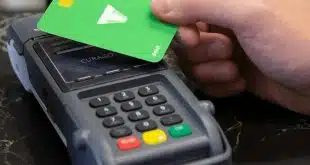Virtual payment cards have been around for more than a decade, but now they appear to be poised for big growth with the rise of e-commerce and the wide availability of digital wallets. Indeed, the volume of transactions arising from these cards will balloon from 28 billion worldwide this year to 121 billion by 2027, according to research released Tuesday by Juniper Research.
This growth will proceed, the research firm says, despite competition from other technologies, such as contactless cards and QR codes. Both technologies have enjoyed increasing popularity in recent years as the pandemic left consumers and business users reluctant to use traditional card payments. Mobile payment methods alone, Juniper predicts, will account for 53 billion virtual card transactions in five years, up from 5 billion this year.
The U.S. is poised to loom large as a virtual card market. It alone will claim 72% of all revenue generated from virtual cards in 2027, Juniper predicts, a share that will come to some $71 billion.

Virtual cards offer a defense against payment fraud that could appeal to issuers and users, particularly in business-to-business markets and such markets as health care, the researcher says. They are typically issued with a randomly generated, 16-digit card number, but this number can be set to be unique for each transaction. The card’s details can also be set to be unique to the digital wallet in which they are stored. And the cards offer nearly instantaneous transfers, fitting into a general movement in payments globally toward real-time settlement.
For these reasons, Juniper predicts rising popularity for the technology. “Virtual cards are popular among [business-to-business] travel purchasing and fleet management, but offer great potential in financial markets and the AP (accounts payable) sector,” the firm says in a summary of its research. “Virtual cards are also growing in the consumer market as an anti-fraud measure.” The arrival in recent years of popular digital-wallet apps has also made the payment method more usable, the researcher adds.
Juniper isn’t alone in its predictions. Accenture Payments forecast in late 2018 that virtual cards were poised to claim a dominant share of business-to-business card payments.
But the technology doesn’t come without drawbacks. Short expiration dates can be a source of frustration for users, as can spending limits that may be set too low for users’ needs, Juniper says. But the cards’ defenses against fraud are likely to help drive increasing issuance and usage, Juniper concludes.
“Virtual cards face tough competition from other payment methods, such as traditional contactless cards and QR codes. However, the report anticipates that the secure nature of virtual cards will drive demand in an increasingly security-conscious market,” the firm says in a statement.





